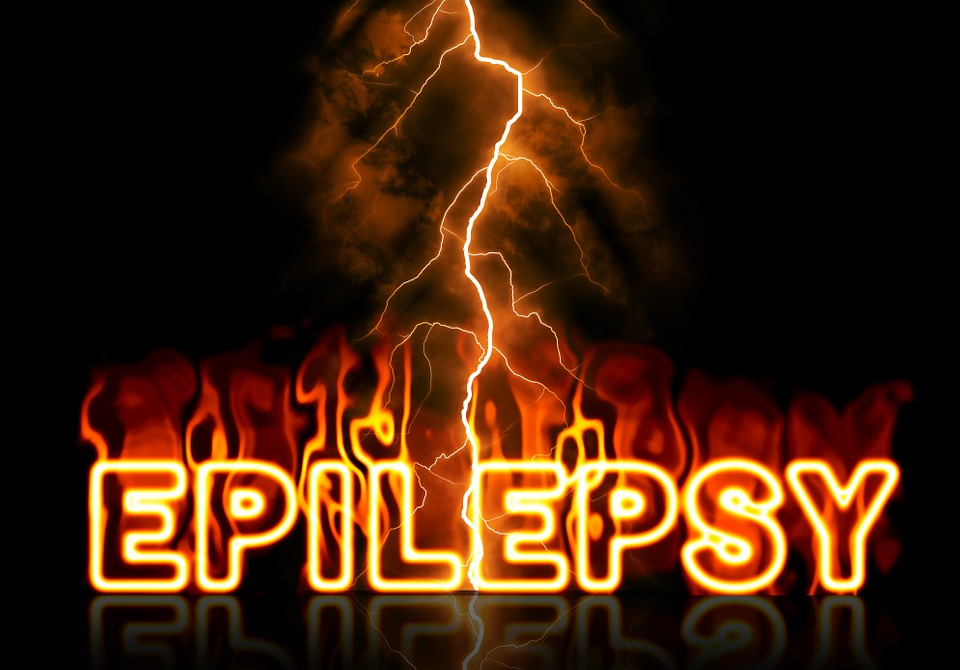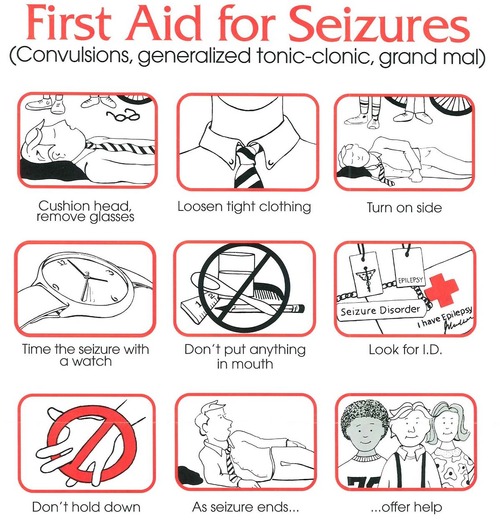The main symptom of epilepsy is repeated seizures. These are sudden bursts of electrical activity in the brain that temporarily affect how it works.
Seizures can affect people in different ways, depending on which part of the brain is involved.
Some seizures cause the body to jerk and shake (a “fit”), while others cause problems like loss of awareness or unusual sensations. They typically pass in a few seconds or minutes.
Seizures can occur when you’re awake or asleep. Sometimes they can be triggered by something, such as feeling very tired.
Types of seizures
Simple partial (focal) seizures or ‘auras’
A simple partial seizure can cause:
a general strange feeling that’s hard to describe
a “rising” feeling in your tummy – like the sensation in your stomach when on a fairground ride
a feeling that events have happened before (déjà vu)
unusual smells or tastes
tingling in your arms and legs
an intense feeling of fear or joy
stiffness or twitching in part of your body, such as an arm or hand
You remain awake and aware while this happens.
These seizures are sometimes known as “warnings” or “auras” because they can be a sign that another type of seizure is about to happen.
Complex partial (focal) seizures
During a complex partial seizure, you lose your sense of awareness and make random body movements, such as:
smacking your lips
rubbing your hands
making random noises
moving your arms around
picking at clothes or fiddling with objects
chewing or swallowing
You won’t be able to respond to anyone else during the seizure and you won’t have any memory of it.
Tonic-clonic seizures
A tonic-clonic seizure, previously known as a “grand mal”, is what most people think of as a typical epileptic fit.
They happen in two stages – an initial “tonic” stage, shortly followed by a second “clonic” stage:
tonic stage – you lose consciousness, your body goes stiff, and you may fall to the floor
clonic stage – your limbs jerk about, you may lose control of your bladder or bowel, you may bite your tongue or the inside of your cheek, and you might have difficulty breathing
The seizure normally stops after a few minutes, but some last longer. Afterwards, you may have a headache or difficulty remembering what happened and feel tired or confused.
Absences
An absence seizure, which used to be called a “petit mal”, is where you lose awareness of your surroundings for a short time. They mainly affect children, but can happen at any age.
During an absence seizure, a person may:
stare blankly into space
look like they're "daydreaming"
flutter their eyes
make slight jerking movements of their body or limbs
The seizures usually only last up to 15 seconds and you won't be able to remember them. They can happen several times a day.
Myoclonic seizures
A myoclonic seizure is where some or all of your body suddenly twitches or jerks, like you've had an electric shock. They often happen soon after waking up.
Myoclonic seizures usually only last a fraction of a second, but several can sometimes occur in a short space of time. You normally remain awake during them.
Clonic seizures
Clonic seizures cause the body to shake and jerk like a tonic-clonic seizure, but you don't go stiff at the start.
They typically last a few minutes and you might lose consciousness.
Tonic seizures
Tonic seizures cause all your muscles to suddenly become stiff, like the first stage of a tonic-clonic seizure.
This might mean you lose balance and fall over.
Atonic seizures
Atonic seizures cause all your muscles to suddenly relax, so you may fall to the ground.
They tend to be very brief and you'll usually be able to get up again straight away.
Status epilepticus
Status epilepticus is the name for any seizure that lasts a long time, or a series of seizures where the person doesn't regain consciousness in between.
It's a medical emergency and needs to be treated as soon as possible.
You can be trained to treat it if you look after someone with epilepsy. If you haven't had any training, call 999 for an ambulance immediately if someone has a seizure that hasn't stopped after five minutes.
Seizure triggers
For many people with epilepsy, seizures seem to happen randomly.
But sometimes they can have a trigger, such as:
stress
a lack of sleep
waking up
drinking alcohol
some medications and illegal drugs
in women, monthly periods
flashing lights (this is an uncommon trigger)
Keeping a diary of when you have seizures and what happened before them can help you identify and avoid some possible triggers.



